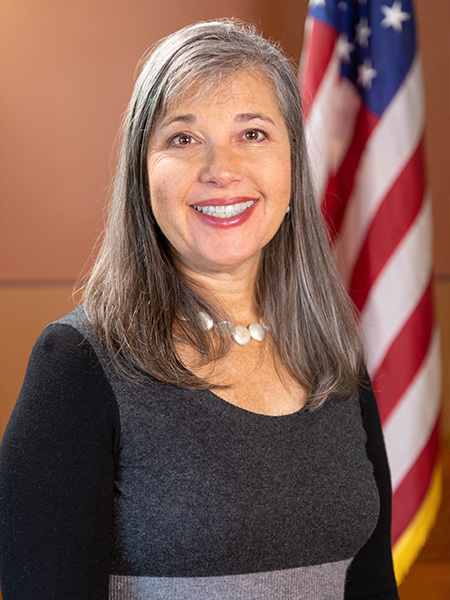Rep. Boylan introduces legislation to tackle microplastics pollution
STATE HOUSE — Rep. Jennifer Boylan has introduced a pair of bills to address synthetic polymer microparticles — better known as microplastics — in Rhode Island, as well as direct the Department of Environmental Management to begin a statewide microplastic monitoring and reduction plan.

“Microplastics continue to accumulate in our soil, waterways, drinking water and bodies without us knowing the full extent of the problem, let alone how best to address it,” said Representative Boylan (D-Dist. 66, Barrington, East Providence). “We need to cut down on our exposure to microplastics by limiting their addition to products, and we also need a plan to measure the current extent of the problem so that we can develop a mitigation plan to deal with our current pollution levels.”
The Microplastics Reduction Act (2025-H 5492) aims to reduce the amount of microplastics introduced into the environment by prohibiting the manufacture, sale or distribution in Rhode Island of any product with intentionally added microplastics, beginning Jan. 1, 2029.
Manufacturers add microplastics to products like fertilizers, pesticides, cosmetics, household and industrial detergents, cleaning products and paints. Microplastics are also used as the soft infill material on artificial turf sports fields. Microplastics do not biodegrade: they end up in oceans, rivers, ponds, food and drinking water, and their ingestion and inhalation has been linked to health conditions like an increased risk of heart disease.
While the full health impacts of microplastics on humans are still being studied, a recent study from URI found that microplastics infiltrate all systems of the body and cause behavioral changes in mice. A study released this year showed that the average adult brain contains seven grams of microplastic— the equivalent of a plastic spoon.
The act would also direct DEM, along with the Department of Health, to adopt a testing plan to monitor the level of microplastics in water and soil as part of a statewide microplastics strategy that covers the health impacts of microplastics, the sources of microplastic pollution, approaches to reduce microplastic pollution, the environmental impacts of microplastic pollution and policy recommendations to reduce or eliminate the presence of microplastics in the environment.
“Plastics and microplastics are one of the most challenging problems facing the Narragansett Bay and watershed, and, unfortunately, the problem is only getting worse,” said Jed Thorp, director of advocacy for Save The Bay. “We commend Representative Boylan for putting forth solutions that will help us start to get a handle on the problem.”
The European Union has already banned intentionally added microplastics, including microplastics associated with artificial turf. Crumb rubber infill of artificial turf fields is made from shredded used automobile tires, and is one of the largest contributors to microplastic pollution in the EU.
The second bill (2025-H 5340) would specifically address artificial turf fields. Beyond the infill, the plastic blades of synthetic “grass” break down into microplastics over time, and artificial turf also contains per- and polyfluoroalkyl substances, or PFAS. All this makes artificial turf a cause for concern; a study found it to be the largest source of microplastic pollution in Toronto, and it can be challenging to safely dispose of when removed. And since artificial turf fields have an estimated lifespan of 8 to 10 years, safe disposal is a reoccurring challenge.
The bill would create a public statewide database managed by DEM to track the location and use of artificial turf fields, including their composition, transportation, installation, removal, reuse, recycling and final disposal. This database would allow state agencies, municipalities and members of the public to understand the prevalence artificial turf in Rhode Island and develop management strategies to address disposal challenges and any resulting impacts on health and the environment.
“In the absence of an inventory, we have no idea how many artificial turf fields are in Rhode Island and which of these athletic fields contain crumb rubber,” said Representative Boylan. “What are the disposal and regular replacement plans for those fields, and what happens to the infill when we have flooding or large-scale storms? These questions led me to draft this legislation.”
Said Dr. Victoria Fulfer, a microplastics scientist at Pollution Solutions and Analytics, “Microplastics have been shown to be pervasive in Narragansett Bay, and work continues to measure the impact they have on our ecosystems and our health. In my opinion, the two bills Representative Boylan is introducing are critically important and will position Rhode Island, as the Ocean State, to become the east coast leader in microplastics testing and reduction policies.”

Rep. Jennifer Boylan
A 2023 study from the University of Rhode Island conducted by Dr. Fulfer and other researchers found that more than 1,000 tons of microplastics have accumulated on the floor of Narragansett Bay in the last 10 to 20 years. Microplastics are then ingested by marine life, potentially putting Rhode Island’s fishing industries and aquatic ecosystems at risk.
“Microplastics are a growing threat to our water and our health,” said Emily Howe, state director of Clean Water Action Rhode Island. “They blanket the floor of Narragansett Bay and have been detected in human brain tissue. We must work to identify and eliminate sources of microplastic contamination of our waterways. Clean Water Action supports these bills as well as reuse systems that reduce the amount of plastic we all use and dispose of every day.”
